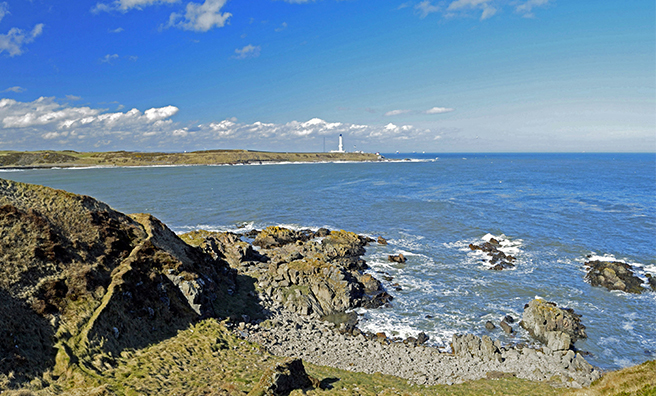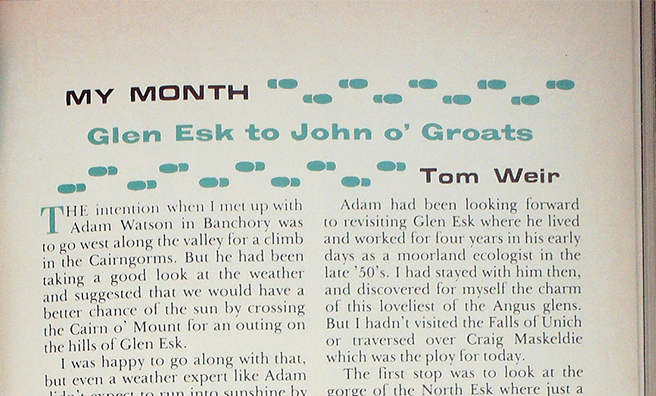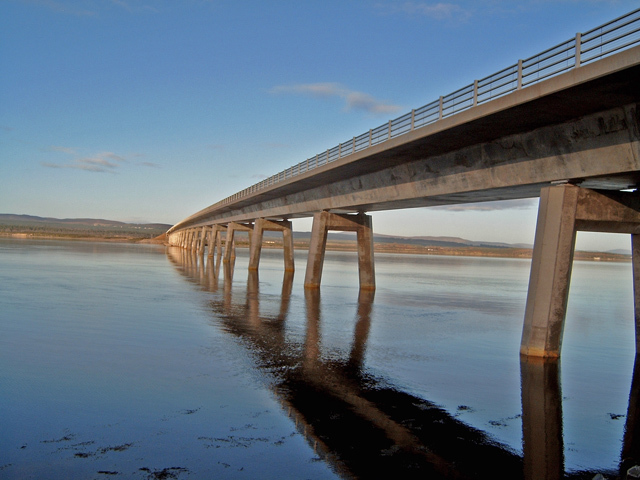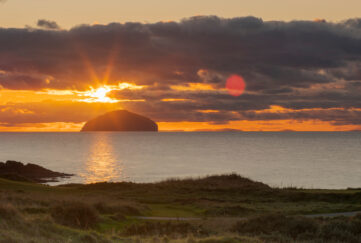Glen Esk to John O’Groats Part Five

Tom Weir considers man’s changes to Scotland’s
coast from Nigg Bay to the Dornoch Firth
Part One Part Two Part Three Part Four
I went next to Nigg Bay to look up at the mighty skeleton of steel towering 200 ft. above me, part of an oil production platform which will end up 200-300 miles out on the North Sea, bolted to the ocean floor, with living quarters for around 250 men.
Less than ten years ago I had watched this land being reclaimed from the sea to make a foundation for the great prefabrication sheds. I had seen a great 1000 ft.-long hole dug in the ground.
It was empty that day, ready for work on the Magnus Platform which will be one of the biggest steel platforms built to put in the sea.
No sign of a recession here, with people coming from all round and two new schools in Invergordon and a new Secondary in Alness to cope with the greatly expanded population.
Indeed more development is forecast, in the shape of petro-chemicals, which worries the conservationists a lot because of the importance of the Moray Firth for wintering wildfowl.
Motoring north to the Dornoch Firth I went down to the old Meikle Ferry slip where in 1809 over a hundred passengers were drowned, causing Thomas Telford to build his road round the head of the water and bridge it at Bonar.
The future A9 plan for the Dornoch Firth is to take it across the narrows where the ferry used to ply, just north-west of Tain which brings Dornoch close and would greatly speed up the journey to Wick and all coastal points between. [It does indeed!]
On the far side of the Dornoch Firth you enter Sutherland for a run that takes you back into the Highlands by way of hills crowding towards the sea with openings to the west up the big straths — Fleet for some of the best alder woods in Britain, Brora with its ancient coal mine, Kildonan for its gold strike.
Tom Weir continues north by the coast road in the next update, which you can read here.
- The Dornoch Bridge, proposed at the time of Tom’s writing, and opened in 1991. Pic © Copyright Ian R Maxwell and licensed for reuse under this Creative Commons Licence.
More From Tom…
We have an extensive archive of Tom Weir’s great columns for The Scots Magazine, and we’re slowly but surely getting them published digitally for new generations to enjoy.
To see the columns we have online so far, click here.








